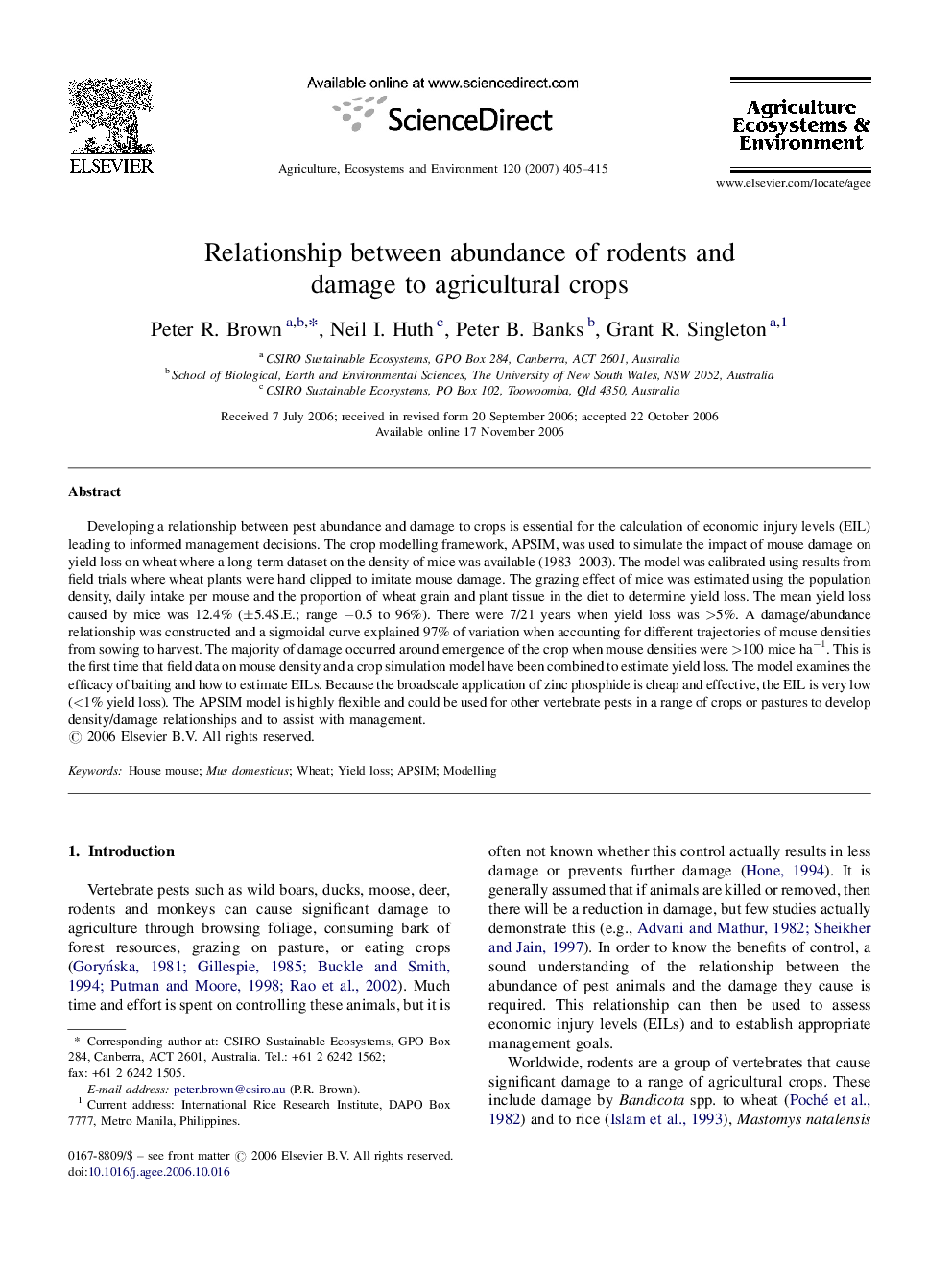| کد مقاله | کد نشریه | سال انتشار | مقاله انگلیسی | نسخه تمام متن |
|---|---|---|---|---|
| 2415622 | 1552141 | 2007 | 11 صفحه PDF | دانلود رایگان |

Developing a relationship between pest abundance and damage to crops is essential for the calculation of economic injury levels (EIL) leading to informed management decisions. The crop modelling framework, APSIM, was used to simulate the impact of mouse damage on yield loss on wheat where a long-term dataset on the density of mice was available (1983–2003). The model was calibrated using results from field trials where wheat plants were hand clipped to imitate mouse damage. The grazing effect of mice was estimated using the population density, daily intake per mouse and the proportion of wheat grain and plant tissue in the diet to determine yield loss. The mean yield loss caused by mice was 12.4% (±5.4S.E.; range −0.5 to 96%). There were 7/21 years when yield loss was >5%. A damage/abundance relationship was constructed and a sigmoidal curve explained 97% of variation when accounting for different trajectories of mouse densities from sowing to harvest. The majority of damage occurred around emergence of the crop when mouse densities were >100 mice ha−1. This is the first time that field data on mouse density and a crop simulation model have been combined to estimate yield loss. The model examines the efficacy of baiting and how to estimate EILs. Because the broadscale application of zinc phosphide is cheap and effective, the EIL is very low (<1% yield loss). The APSIM model is highly flexible and could be used for other vertebrate pests in a range of crops or pastures to develop density/damage relationships and to assist with management.
Journal: Agriculture, Ecosystems & Environment - Volume 120, Issues 2–4, May 2007, Pages 405–415